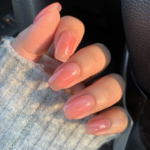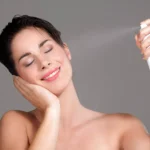Curly hair can be both beautiful and challenging to manage. Proper care is essential to keep curls looking their best, and one crucial element in curly hair care is protein. Protein provides the building blocks that hair needs to remain healthy and strong. So, whether you have loose waves or tight coils, discover the benefits of protein for curly hair and how protein can be your secret weapon for achieving resilient, envy-worthy curly locks.
How Does Protein Benefit Curly Hair?
Protein is an essential component of hair, accounting for about 85% of its composition. It provides structure, strength, and resilience to each hair strand. Without enough protein, hair can become weak and prone to breakage. For curly hair, which is more delicate and susceptible to damage, protein is particularly important.
When hair becomes damaged due to heat styling, chemical treatments, or mechanical stress, the hair cuticle lifts and exposes the inner cortex of the hair strand. This makes the hair more porous and prone to breakage. Protein treatments help to repair and strengthen the hair cuticle, reducing porosity and improving elasticity. With regular use, protein treatments can improve the overall health, manageability, and appearance of curly hair.

Types of Proteins for Curly Hair
There are several different types of proteins used in hair care products, with varying molecular weights and properties. Each type of protein offers its unique benefits to the hair.
Hydrolyzed Keratin
Keratin is a fibrous protein found in hair, skin, and nails. Hydrolyzed keratin is derived from keratin through a process called hydrolysis, which breaks down the protein into smaller fragments that are more easily absorbed by the hair. Hydrolyzed keratin helps to strengthen and smooth the hair cuticle, reducing frizz and improving shine.
Hydrolyzed Wheat Protein
Hydrolyzed wheat protein is a plant-based protein that is derived from wheat germ. It has a low molecular weight, making it easy to penetrate the hair shaft. Hydrolyzed wheat protein helps to repair and strengthen hair, improving its elasticity and reducing breakage.
Hydrolyzed Soy Protein
Hydrolyzed soy protein is a plant-based protein derived from soybeans. Like hydrolyzed wheat protein, it has a low molecular weight and can easily penetrate the hair shaft. Hydrolyzed soy protein helps to moisturize and strengthen hair, improving its texture and shine.
Collagen Protein
Collagen is a structural protein found in the body’s connective tissues, including hair. Collagen protein is a popular ingredient in hair care products because it helps to improve the hair’s elasticity and strength. It also adds moisture, reducing frizz and improving manageability.
How to Incorporate Protein into Your Hair Care Routine
Protein treatments can be applied to curly hair in several ways, including as a leave-in conditioner, deep conditioner, or hair mask. The best method will depend on your hair’s needs and its level of damage.
Leave-In Conditioner
Leave-in conditioners containing protein can be applied to wet or dry hair and left in place without rinsing. They help to detangle hair, add moisture, and provide ongoing protection against damage.
Deep Conditioner
Deep conditioning treatments are designed to penetrate the hair shaft deeply, providing intense hydration and nourishment. Protein deep conditioners are formulated with high concentrations of protein and should be used once every 2-4 weeks, depending on the level of damage.
Hair Mask
Hair masks provide an intense treatment for damaged hair. They contain a high concentration of protein and other nourishing ingredients to repair and restore hair health. Hair masks can be used weekly or as needed, depending on the level of damage.
Conclusion
Protein is essential for maintaining strong and defined curls. Incorporating protein-based products in moderation can repair and strengthen curly hair, resulting in frizz-free and resilient locks. Alongside protein care, proper hydration and gentle cleansing are crucial for healthy curls. Embrace the power of protein to unleash the full potential of your natural curls and achieve a stunning, head-turning hairstyle.
FAQs
- How often should I use protein treatments on my curly hair? The frequency of protein treatments will depend on the level of damage to your hair. If your hair is severely damaged, you may need to use a protein treatment once a week. In case your hair is relatively healthy, once every 2-4 weeks should be sufficient.
- Can I use too much protein on my curly hair? Yes, it is possible to overuse protein on curly hair, which can lead to stiffness and breakage. It’s essential to balance protein treatments with moisturizing treatments to keep hair healthy and strong.
- Can I use protein treatments on color-treated hair? Yes, protein treatments are safe to use on color-treated hair. However, some types of protein, such as hydrolyzed keratin, can temporarily affect hair color, so it’s best to test the product on a small section of hair first.
- Can I make my protein treatment at home? Yes, there are many DIY protein treatments that you can make at home using ingredients such as egg, avocado, and yogurt.
- Can protein treatments help with hair growth? While protein treatments can improve the health of the hair, they do not directly stimulate hair growth.






